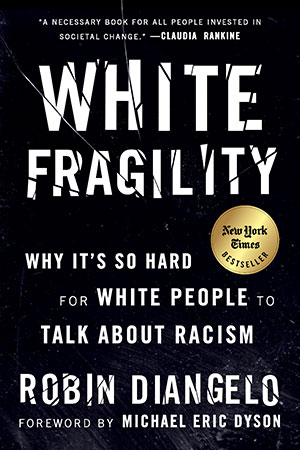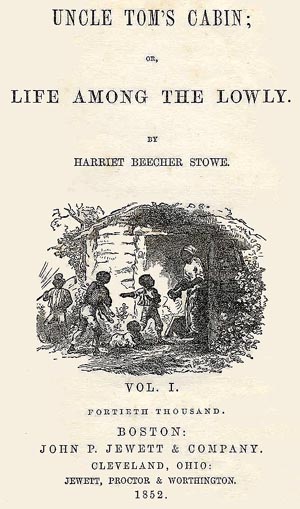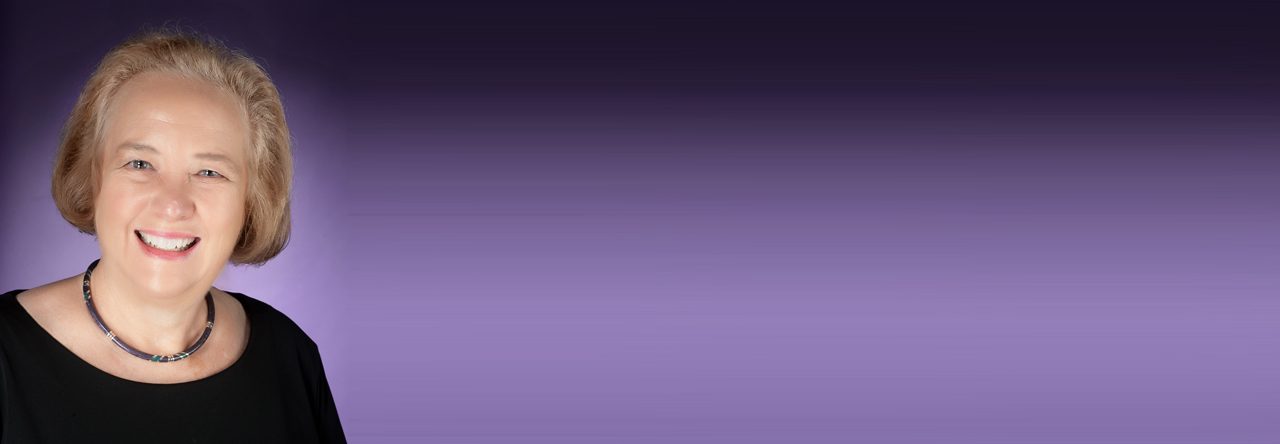Soon after When They See Us began streaming on Netflix, I saw an article by Doug Criss on CNN’s website. The lead grabbed me right away: “I tried to watch ‘When They See Us,’” Criss declared. “I couldn’t even get past the trailer.” Criss attributed his feeling overcome to a cluster of related causes: “the all-too familiar images of young black men in police custody and on trial,” and remembering “what it’s like to be a young black man on the other end of a police officer’s suspicious stare,” and having “a teenage son” who will, very likely, have to “endure the same treatment.”
Criss’s essay itself called up a range of images and memories for me as a white educator who aims to be an ally, but who often feels that the system is impervious to all efforts to promote change. I remembered the first-year African American student in a seminar class where I teach now, at TCU, telling all of us in the room how tired he was of people asking, “What sport do you play?” He asked why peers seemed surprised when his regular, honest answer, was “I am a Community Scholar, here on a merit scholarship.” I remembered the first time I heard a stark tale of police assuming the worst, right away, about a young black man whose only offense was being in a space where he was unexpected—and unwelcome. While teaching at Mott Community College in Flint in the late 1980s, right around the time of the events depicted in Ava DuVernay’s film, an African American student in one of my composition classes wrote a tense and righteously frustrated narrative about his attempt to stop at a banking center in the suburb where I lived, when on his way to a meeting with other students from another course. Police lights and siren exploded around him, and two policemen hurled him up against the hood of his car. “What are you doing here?” they shouted. Only after tense questioning did they let him go: a college student on his way to a study session. Every time I drove past that bank in the months and years afterwards, I wondered: what can I do to change the dynamic, to help dismantle the system that would assume such a serious and thoughtful student didn’t belong there? That he must be “up to something”?
In years of teaching since then, at a variety of institutions, I’ve been told by students—and educator colleagues—about an array of similar events. And, of course, I’ve seen plenty of painfully similar ones on the news, many having far more definitively fatal consequences than the one my student in Michigan wrote about. So I could understand why Criss might find When They See Us too difficult watch: he had seen too many versions of the story already.
Implicit in Criss’s story, it seemed to me, was a reminder of who most needed to watch the film and reflect on its message: white people like me. If we want to be allies, we need knowledge. As white writer Robin Diangelo urges in White Fragility: Why It’s So Hard for White People to Talk about Racism, we need to educate ourselves.

And one way we can do so is by engaging with the texts from people of color that can support our learning. Note, in that context, that Diangelo cautions us “not to depend on people of color for our racial education,” that is, not to try to force such colleagues to take charge of our learning and manage it for us (146). Instead, she says, we need to reflect critically on our own experiences and shortcomings (148). We need to listen carefully and empathetically when advice is offered to us, recognizing that “Many people of color are committed to teaching whites about racism (on their own terms),” and that some of that teaching lies in “books, websites, films” and personal interactions (146). We need to pay close attention to those resources. When They See Us offers just such an opportunity for learning.
The backstory of When They See Us
In 1989, as young black teenagers, Korey Wise, Antron McCray, Kevin Richardson, Yusef Salaam, and Raymond Santana were found guilty of the rape and brutal beating of a white woman jogger in New York’s Central Park. The stunning verdict emerged in the wake of sensationalized news coverage and doggedly persistent prosecution despite a lack of physical evidence that could link the five to the crime scene and despite multiple conflicting details in their confessions, which advocates claimed had been coerced. Thirteen years after the crime, a confession by Matias Reyes, himself by then imprisoned for unrelated charges of rape and murder, led to a reinvestigation of the case. Reyes’s DNA matched that found on the victim and at the scene. The five had finally been proven innocent.
In 2012, Ken Burns brought out a documentary about the case. The new Netflix account, admittedly more of a docudrama than a detached re-presentation of evidence, takes a more artistic route, one positioned as a call to deeply felt empathy. DuVernay’s four-part film revisits the events and their long aftermath in the lives of the five, and her account provides an even more compelling truth-telling by placing viewers into the homes, the prison cells, and complex maze of post-incarceration life along with her protagonists. Unabashedly emotional in content and equally straightforward in calling on the emotions of its viewers, When They See Us has been broadly, rightly praised for its narrative power. Time hailed its strategic application of the “seeing” theme referenced in its title. The Hollywood Reporter praised its move to place “Trump in the Hot Seat” along with so many other white social arbiters who “failed” the five falsely accused youth. Multiple reviews credited its insistence on depicting as individuals the group too-often dubbed “the Central Park Five.”
Given the accolades already earned, it may seem unnecessary, presumptuous even, for me to write about this masterwork. I’m a well-to-do white lady who has never and likely will never face the challenges of the group Oprah Winfrey has re-christened “the exonerated five.” Oprah herself, during the special one-hour Netflix-streaming discussion she hosted as a supplement to the film, repeatedly acknowledged her own privilege in comparison to the five, whom she interviewed for that show. Despite their shared race identity, she repeatedly cast herself as learning from their story of experiences that she would never have. And she emphasized how each had his own unique experiences of the case and its aftermath in their lives.
First, when they were released at different times from prison, they were still dubbed felons and constrained in the way the prison complex continues to hold former inmates hostage. Later, even after they were exonerated when the actual perpetrator confessed, they were unable to reclaim lost years, lost youth, lost hopes. Finally, they received a settlement—but they maintained in this interview, several times through tears, that no amount of money could really compensate for the horrible, wrongful suffering they and their families had endured. What of real value, I wondered, could a white audience member, however well-meaning, possibly say about their story—a story they had, themselves, urged DuVernay to tell?
Then, however, I began asking a number of white friends what they thought of the film. No one I asked had watched it. Many claimed not to have heard about it. How had they missed the press coverage? The widespread responses on social media? And weren’t they an audience who needed to see the film? Isn’t the ally-ship and agency of white people needed to make systemic-level change? Might I at least be able to draw some additional white viewers to this important story, while encouraging them to locate their “reading” in the context of additional narratives from black teachers with experience-based knowledge and story-telling skills beyond ours?
Reading The Dark Fantastic and When They See Us together
Ebony Elizabeth Thomas’s new monograph, The Dark Fantastic, is a brilliant academic book about popular culture representations of black girls and audience responses to those figures. Her focus is on imaginative narratives—on fantasy and its power to help us imagine different selves, lives different than our own. In that sense, her inquiry landscape is far removed from the gritty reality of the Exonerated Five’s experiences of injustice. Additionally, Thomas’s work in this book spotlights dark girls, specifically, rather than boys.
Decrying the inability of many white audience members (readers of print, viewers of video on television or in movies) to embrace or identify with black girls as fully empowered characters in fantasy/speculative narratives (what she calls “the fantastic,” or stories “stepping into a world-that-never-way” [8]), she offered up a series of compelling examples. For instance, she documents some whites’ negatives responses to Rue in The Hunger Games film version. To demonstrate “how Black girl characters are uniquely subjected to violence even in a horror narrative,” she examines “what happens as Irish American Bonnie McCullough in the book series [The Vampire Diaries] is transformed into African American Bonnie Bennett on the television screen” (13). She relates these case studies to a sustained trend in the culture—one positioning blacks as “the Dark Other,” always cast as a monster, to such an extent that it becomes difficult, perhaps impossible, for members of the dominant culture “to voluntarily choose to identify” with that Dark Other, to see such figures as anything other than monstrous. Underscoring the persistence of this attitude, she notes, “This primal fear of darkness and Dark Others is so deeply rooted in Western myth that it is nearly impossible to find its origin” (19). Its impact, though, is clear. Besides contributing to fear of the unknown, this cultural view helped keep “conquered and enslaved people” on the outer edges of society: “‛Darky,’ a colloquial term for people of African descent during the late eighteenth century, signals that in modern English, darkness has never been just a metaphor. Darkness is personified, embodied, and most assuredly racialized” (20).
Despite their differing focal points, several themes central to Thomas’s analysis resonated, for me, with When They See Us. The Dark Other, Ebony Thomas’s book helped me understand, is how police and prosecutors saw and cast the young boys caught up in a frenzied search for—and associated pre-imagined finding of– brutes who had raped and left for dead the white, innocent Central Park jogger. (Notes Thomas, referencing herself and other African Americans, “We are the enemies. We are the monsters” [23]). Once the police narrative began building, longstanding cultural forces kept adding details consistent with seeing this Other—in this case, the young boys—as monstrous. The “wilding” accounts in newspaper stories describing an even larger pack of dark, violent groups roaming the park that night only reaffirmed that narrative, as did full-page ads taken out by none other than Donald Trump, urging the death penalty. Many whites presented with these narratives were unable to resist their message, unable to offer up a counter-narrative envisioning the “dark” boys as innocent.
Toni Morrison’s The Origin of Others
Ebony Thomas sets her conceptual framework in productive dialogue with an influential text by Nobel laureate Toni Morrison: Playing in the Dark. While explicating ways that canonical literature has been dependent upon a Dark Other to enable its depictions of individualistic white heroism, Thomas suggests, Morrison also critiques how this crucial dichotomy nonetheless pretends that race is not operating as an essential marker and policer of difference. The Dark Other is what has enabled the most canonical texts of white American literature (Melville, Faulkner, and so on), over and over; extending Morrison’s argument to the less canonical realm of YA lit and films—to the particular contemporary texts we can read today in a range of media as “the dark fantastic”—opens us up to Thomas’s counter-readings of white heroes and heroines like Katniss in The Hunger Games by pushing us to look more closely at their dark counterparts (like Rue) in the same texts. Doing so requires us to resist familiar versions of the “Dark Other” as dangerous rather than sympathetic, evil rather than innocent. Korey, Antron, Kevin, Yusef, and Raymond would, then, have been “read” more empathetically, in other words, as “dark fantastic” rather than Dark Other.
Recently, Morrison has expanded on these ideas in The Origin of Others (2017), a slim but illuminating volume of essays based on the Norton lectures, a series of talks she gave at Harvard in 2016. As Ta-Nehisi Coates proposes in his Foreword to the collection, Morrison here lays out powerful connections between such social justice issues as the mass incarceration of black males and the persistent power of racism, of the legacies of slavery and a determined tendency, still, of white culture to cast blacks as beasts—to dehumanize them “as an ‘Other’” that must remain “beyond the border of a great ‘belonging’” (xv). As Morrison herself notes, pseudo-scientific “racism” aims “to identify an outsider in order to define one’s self” in positive terms through the maintenance of “difference of the Othered” (6). And, later, she elaborates by asking: “What is the nature of Othering’s comfort, its allure, its power (social, psychological, or economical)?” Locating the “Other” as stranger on the margins, those in power maintain their position at the center. In other words, continued, determined insistence on the so-called “Central Park Five” as “Other” than young boys, as so (supposedly rightly) marginalized from normal society that rules like parental support during questioning need not apply, as (in Thomas’s terms) monsters—this mindset among the white arbiters in charge of investigating the crime and placing the guilty one(s) on trial made it easy, almost predictable, to “discover” their guilt and punish.
When They See Us as Critical Counter-storytelling
Ava DuVernay scripted and directed When They See Us, I suspect, to serve as a counter-narrative. By locating those “reading” her film within the experiences of the five protagonists, she pushed white audiences to share those experiences imaginatively, and thus to push past our tendency to “Other” these young boys (later men). She offered a narrative pathway to empathy which, in turn, might lead us not only to SEE them differently but to SEE the systems in society which have created structures that sustain our separation from them, that keep them “in their place,” and that undermine possibilities for genuine interracial community-building.

One of Toni Morrison’s most trenchant analyses in The Origin of Others is her critique of Harriet Beecher Stowe’s Uncle Tom’s Cabin. Crediting Stowe for deft and purposeful appeals to feeling, Morrison simultaneously underlines (and condemns) the racist characterizations and plot elements woven through that famous nineteenth-century anti-slavery text. Morrison’s astute explanation of what might at first seem contradictory—to write a story opposing slavery that nonetheless reduces many black characters to racist stereotypes—lies in a bitter yet insightful summation of the work: “Harriet Beecher Stowe did not write Uncle Tom’s Cabin for Tom, Aunt Chloe, or any black people to read. Her contemporary readership was white people, those who needed, wanted, or could relish the romance” (13-14) of black subservience and Otherness that Stowe imagined would still be a necessary ingredient in a post-slavery world.
Might we at last reach a different time? If at least part of DuVernay’s audience is anticipated as white, she joins Stowe in calling on our feelings, promoting our ability to empathize with the suffering of others. But DuVernay asks far more of us. She challenges us to cast aside the Dark Other and form a genuine new community, where even black boys can be innocent, where the most privileged holders of white social power can SEE, listen and learn.




Thank you Sarah for keeping on keeping on!
LikeLiked by 1 person
Great analysis! I am saving this to reread after I watch the series. Thanks!
LikeLiked by 1 person
Pingback: Toni Morrison Can Still Teach Us – Sarah Ruffing Robbins
Great article! I was one of those who put off watching it as I was afraid of what I would see (I am a former prosecutor). The most revelatory part for me was their post-prison experience and how difficult the system made it for them reintegrate into society. Everyone should watch the series (and read your article!)
LikeLiked by 1 person
Thank you, Meg! I’m gad you watched. I found it painful but worthwhile to watch the series. So glad you also appreciated the blogpost.
LikeLike